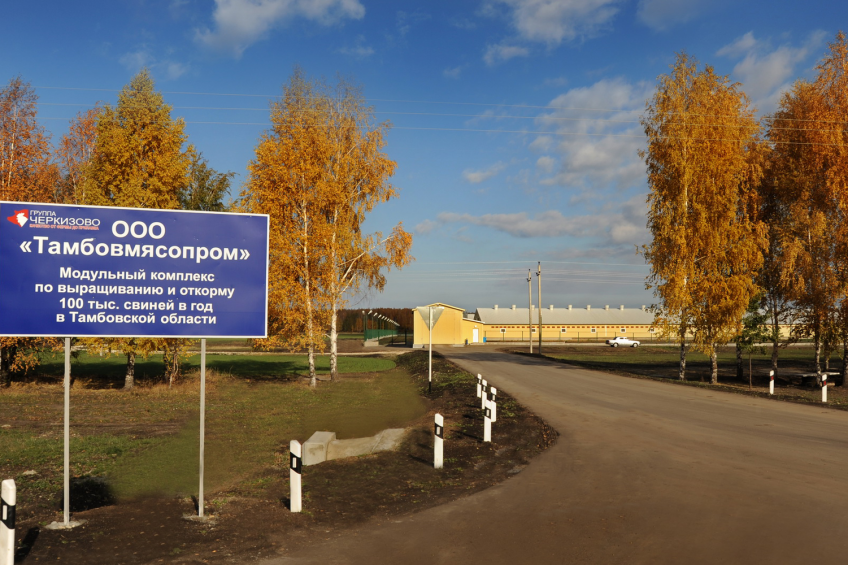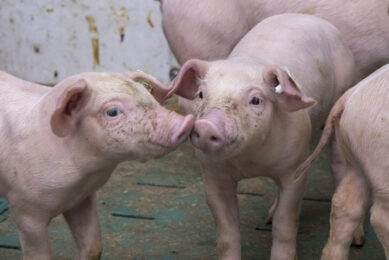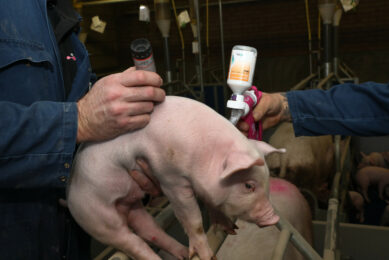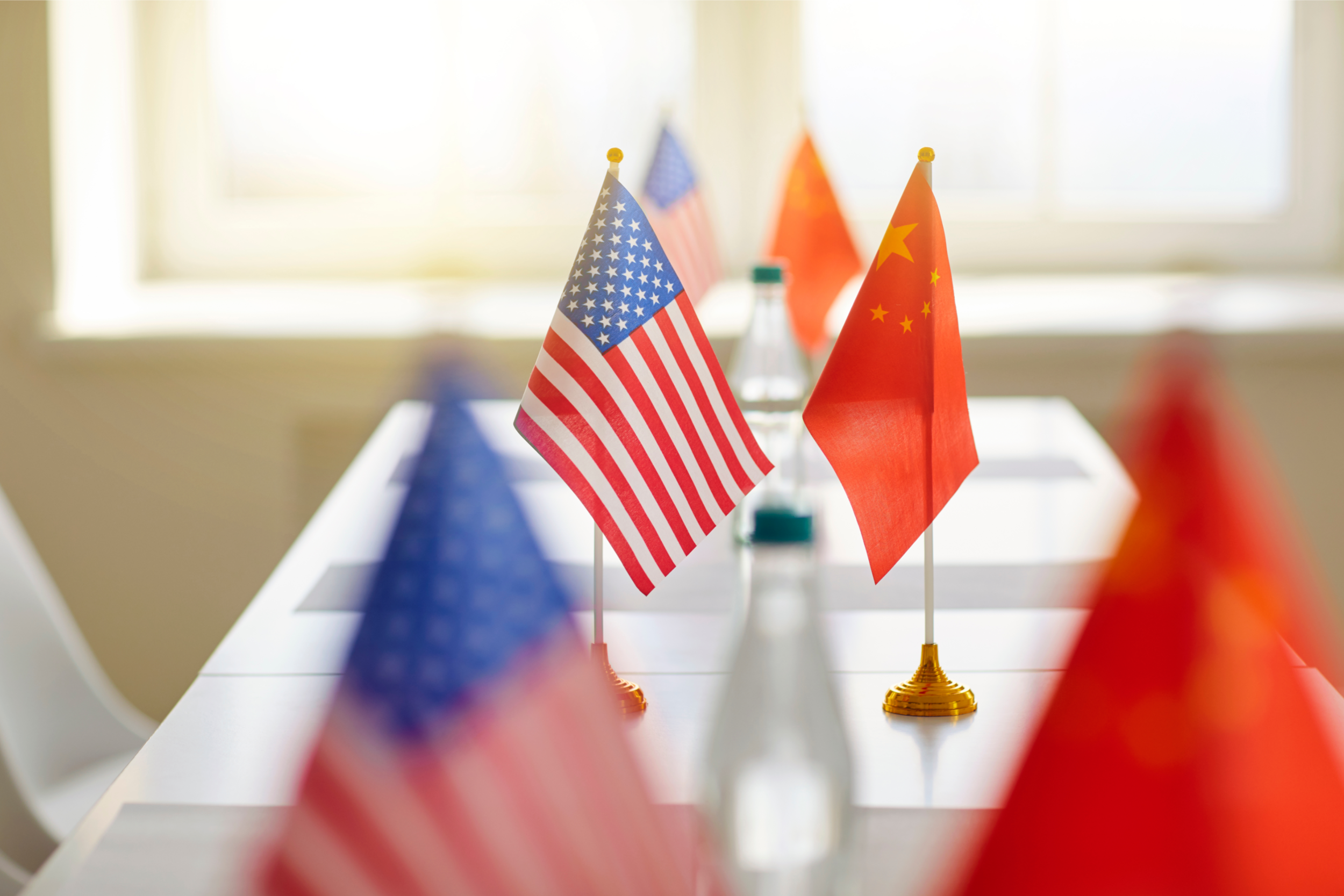Cherkizovo’s role in Russia’s self sufficiency

Russian meat giant, Cherkizovo, recently completed a programme for developing its pork division, and it shows no signs of stopping. Even within the challenges of a volatile market, the government’s goal to reach self-sufficiency ensures investment is on-going in the pig sector.
Agricultural holding Cherkizovo is not only one of Russia’s largest pork producers, but also one of the most efficient companies in the domestic livestock industry. In fact, Russian authorities consider it one of the pillars of food security in the country. The company has been actively expanding its business over recent years, and can count facilities in Moscow, Voronezh, Lipetsk, Penza, Vologda and Tambov oblasts (regions), all in the West of Russia, among its assets.
Development of pork division
In 2013, the group of companies completed the implementation of a major programme for the development of the pork division in Central Russia. This investment facilitated a 50% increase in the volume of production from 103,000 tonnes to 158,000 tonnes. In 2014, Russia’s National Union of Pig Producers published a list of the largest pork producers in the country which showed that the investment programme had allowed Cherkizovo to climb from third to second place with a 6.1% share in the total volume of industrial production of pork in Russia.
Many pig farms in Russia are still using out-dated equipment and technologies which results in production which incurs higher costs and offers lower quality. Cherkizovo, however, is constructing all its pig farms from the ground up using only the most modern equipment. The company aims to steadily decrease production costs whilst maintaining the production of high-quality pork. In order to fulfil the goals of the government’s self-sufficiency strategy, Cherkizovo will invest billions of roubles more in the construction of new farms in the coming years in an attempt to double the production capacity.
Sanctions pose no threat
In general, the changing of the market conjuncture following the introduction of mutual Russian and Western sanctions should mostly have a positive effect on the company’s profitability as it will keep the prices of pork on the domestic market high. However, the company itself admits that there are some challenges connected with the fall of the purchasing power of the population, which may negatively affect the state of pork demand as consumer turn to cheaper commodities such as chicken.
Cherkizovo though may still rely on government support, because the Russian authorities want to reduce the country’s dependence on pork imports. “Russian meat producers can receive additional financial assistance amounting to 84.4 billion roubles (US$ 1.57 billion) until 2020 with the state order to reduce the country’s dependence on imported meat to 7.7% from the current 21.6%,” stated Moody’s analyst Catherine Lipatov in a recent report, adding that state support will help Cherkizovo to reduce the risks associated with the relatively high credit load. However, the government still has not made a final decision on the exact amount of support, and it may be less than expected as the state budget is now suffering heavy losses from the falling oil prices on the global market.
Quarterly profit increased
So far, Cherkizovo only benefited from the current market processes. Thus, during the first nine months of 2014 the company increased revenue by 15%, to US$ 1.4 billion, and net profit ten-fold, to US$ 228.1 million year-on-year. The quarterly profit increased to US$ 112.8 million, compared to US$ 14.1 million for the third quarter of 2013. The company enjoyed the high prices on the domestic market, which since the beginning of 2014 jumped almost a quarter mostly due to the ban on pork imports from the European Union (EU) in the beginning of the year and several other restrictions imposed by Rosselkhoznadzor in the first half of 2014.
Higher margins for pork
“Prices for meat products during the first nine months of 2014 were strong enough, which resulted in higher margins in the poultry and pork segments, but at the same time the meat processing segment was under strong pressure, so the margins here fell sharply. Currently, the price of pork after reaching historic record heights has returned to the values as of the beginning of the year,” Sergei Mikhailov, Cherkizovo’s CEO, announced in a company statement.
The prices in roubles are rising fast, while the average pork prices in dollars decreased compared to the level as of the middle of the year. The exchange rate of the Russian rouble against dollar and euro dropped by 40% since the beginning of 2014. The largest drop occurred during the period of October-November, so experts say that the largest pork producers in the country will feel the effect of these changes in the first quarter of 2015.
The falling rouble also means a price increase for feed additives which, in the Russian pig industry are mostly imported and therefore cut the profit of companies in dollars. Moreover, numerous reports say that the fall of the population’s purchasing power may trigger a decrease in the consumption of expensive types of meat.
Further investment plans
Despite these tumultuous conditions, Cherkizovo sees no reason to reconsider its expansion plans. The company has stated its intent to invest about 13 billion roubles (US$ 241 million) in developing pig production in the Voronezh and Lipetsk Oblasts during 2015-2018. The plans involve two separate projects with the total capacity of 136,600 tonnes of pork per year and breeding farms for 46,400 sows. Following implementation of the project the total production capacity in the pig division will rise to almost 300,000 tonnes per year by 2019. By that time, the share of Cherkizovo in the total structure of industrial pork production in Russia may grow to about 10%.
Four breeding farms, 20 fattening farms
The majority of the investment will be placed at the first project in the Lipetsk Oblast where the construction of four breeding farms and 20 fattening farms is planned. The whole project will be run by the subsidiary company ‘Cherkizovo Pig Farming’. The total investment for the Lipetsk project is almost 11 billion roubles (US$ 204 million) and will result in a total production capacity of 105,100 tonnes per year. In the neighbouring Voronezh Oblast, the investment is planned on a much smaller-scale. Run by the subsidiary company ‘Agroresurs-Voronezh’, there are plans to build six finishing farms with a total production capacity of 31,500 tonnes. The total investment cost of this project would be around 2.16 billion roubles (US$ 37 million).
Vertical integration
In conjunction with the expansion of pig production sector, Cherkizovo is also looking to develop its meat processing and feed segments. The current total capacity of Cherkizovo’s pig farms is 180,000 tonnes per year, while the capacity of its meat processing plants only amount to 158,000 tonnes. As a result the company has to sell some pork to other plants or not operate its pig farms at full production capacity. Cherkizovo also owns six feed mills which have the total capacity of 1.4 million tonnes of feed per year. This almost covers the current needs of the company’s pig and poultry stock in feed production, but given the expansion plans in both these segments Cherkizovo will probably need to increase the volume of feed production by 80% to meet demand.
Cherkizovo Group
- 15 pork production facilities with a total capacity of 180,000 tonnes live weight per year
- 8 full cycle poultry production facilities, with a total capacity of 550,000 tonnes live weight per year
- 6 meat processing plants with a total capacity of 160,000 tonnes per year
- 7 fodder plants with a total capacity of 1.4 million tonnes per year
- Grain storage facilities with a total storage capacity exceeding 500,000 tonnes
- A land bank exceeding 140,000 hectares.
Agricultural holding Cherkizovo is not only one of Russia’s largest pork producers, but also one of the most efficient companies in the domestic livestock industry. In fact, Russian authorities consider it one of the pillars of food security in the country. The company has been actively expanding its business over recent years, and can count facilities in Moscow, Voronezh, Lipetsk, Penza, Vologda and Tambov oblasts (regions), all in the West of Russia, among its assets.
In 2013, the group of companies completed the implementation of a major program for the development of the pork division in Central Russia. This investment facilitated a 50% increase in the volume of production from 103,000 tonnes to 158,000 tonnes. In 2014, Russia’s National Union of Pig Producers published a list of the largest pork producers in the country which showed that the investment programme had allowed Cherkizovo to climb from third to second place with a 6.1% share in the total volume of industrial production of pork in Russia.
Many pig farms in Russia are still using out-dated equipment and technologies which results in production which incurs higher costs and offers lower quality. Cherkizovo, however, is constructing all its pig farms from the ground up using only the most modern equipment. The company aims to steadily decrease production costs whilst maintaining the production of high-quality pork. In order to fulfil the goals of the government’s self-sufficiency strategy, Cherkizovo will invest billions of roubles more in the construction of new farms in the coming years in an attempt to double the production capacity.
Sanctions pose no threat
In general, the changing of the market conjuncture following the introduction of mutual Russian and Western sanctions should mostly have a positive effect on the company’s profitability as it will keep the prices of pork on the domestic market high. However, the company itself admits that there are some challenges connected with the fall of the purchasing power of the population, which may negatively affect the state of pork demand as consumer turn to cheaper commodities such as chicken.
Cherkizovo though may still rely on government support, because the Russian authorities want to reduce the country’s dependence on pork imports. “Russian meat producers can receive additional financial assistance amounting to 84.4 billion roubles (US$ 1.57 billion) until 2020 with the state order to reduce the country’s dependence on imported meat to 7.7% from the current 21.6%,” stated Moody’s analyst Catherine Lipatov in a recent report, adding that state support will help Cherkizovo to reduce the risks associated with the relatively high credit load. However, the government still has not made a final decision on the exact amount of support, and it may be less than expected as the state budget is now suffering heavy losses from the falling oil prices on the global market.
So far, Cherkizovo only benefited from the current market processes. Thus, during the first nine months of 2014 the company increased revenue by 15%, to US$ 1.4 billion, and net profit ten-fold, to US$ 228.1 million year-on-year. The quarterly profit increased to US$ 112.8 million, compared to US$ 14.1 million for the third quarter of 2013. The company enjoyed the high prices on the domestic market, which since the beginning of 2014 jumped almost a quarter mostly due to the ban on pork imports from the European Union (EU) in the beginning of the year and several other restrictions imposed by Rosselkhoznadzor in the first half of 2014.
Higher margins for pork
“Prices for meat products during the first nine months of 2014 were strong enough, which resulted in higher margins in the poultry and pork segments, but at the same time the meat processing segment was under strong pressure, so the margins here fell sharply. Currently, the price of pork after reaching historic record heights has returned to the values as of the beginning of the year,” Sergei Mikhailov, Cherkizovo’s CEO, announced in a company statement.
The prices in roubles are rising fast, while the average pork prices in dollars decreased compared to the level as of the middle of the year. The exchange rate of the Russian rouble against dollar and euro dropped by 40% since the beginning of 2014. The largest drop occurred during the period of October-November, so experts say that the largest pork producers in the country will feel the effect of these changes in the first quarter of 2015.
The falling rouble also means a price increase for feed additives which, in the Russian pig industry are mostly imported and therefore cut the profit of companies in dollars. Moreover, numerous reports say that the fall of the population’s purchasing power may trigger a decrease in the consumption of expensive types of meat.
Further investment plans
Despite these tumultuous conditions, Cherkizovo sees no reason to reconsider its expansion plans. The company has stated its intent to invest about 13 billion roubles (US$ 241 million) in developing pig production in the Voronezh and Lipetsk Oblasts during 2015-2018. The plans involve two separate projects with the total capacity of 136,600 tonnes of pork per year and breeding farms for 46,400 sows. Following implementation of the project the total production capacity in the pig division will rise to almost 300,000 tonnes per year by 2019. By that time, the share of Cherkizovo in the total structure of industrial pork production in Russia may grow to about 10%.
The majority of the investment will be placed at the first project in the Lipetsk Oblast where the construction of four breeding farms and 20 fattening farms is planned. The whole project will be run by the subsidiary company ‘Cherkizovo Pig Farming’. The total investment for the Lipetsk project is almost 11 billion roubles (US$ 204 million) and will result in a total production capacity of 105,100 tonnes per year. In the neighbouring Voronezh Oblast, the investment is planned on a much smaller-scale. Run by the subsidiary company ‘Agroresurs-Voronezh’, there are plans to build six finishing farms with a total production capacity of 31,500 tonnes. The total investment cost of this project would be around 2.16 billion roubles (US$ 37 million).
Vertical integration
In conjunction with the expansion of pig production sector, Cherkizovo is also looking to develop its meat processing and feed segments. The current total capacity of Cherkizovo’s pig farms is 180,000 tonnes per year, while the capacity of its meat processing plants only amount to 158,000 tonnes. As a result the company has to sell some pork to other plants or not operate its pig farms at full production capacity. Cherkizovo also owns six feed mills which have the total capacity of 1.4 million tonnes of feed per year. This almost covers the current needs of the company’s pig and poultry stock in feed production, but given the expansion plans in both these segments Cherkizovo will probably need to increase the volume of feed production by 80% to meet demand.











